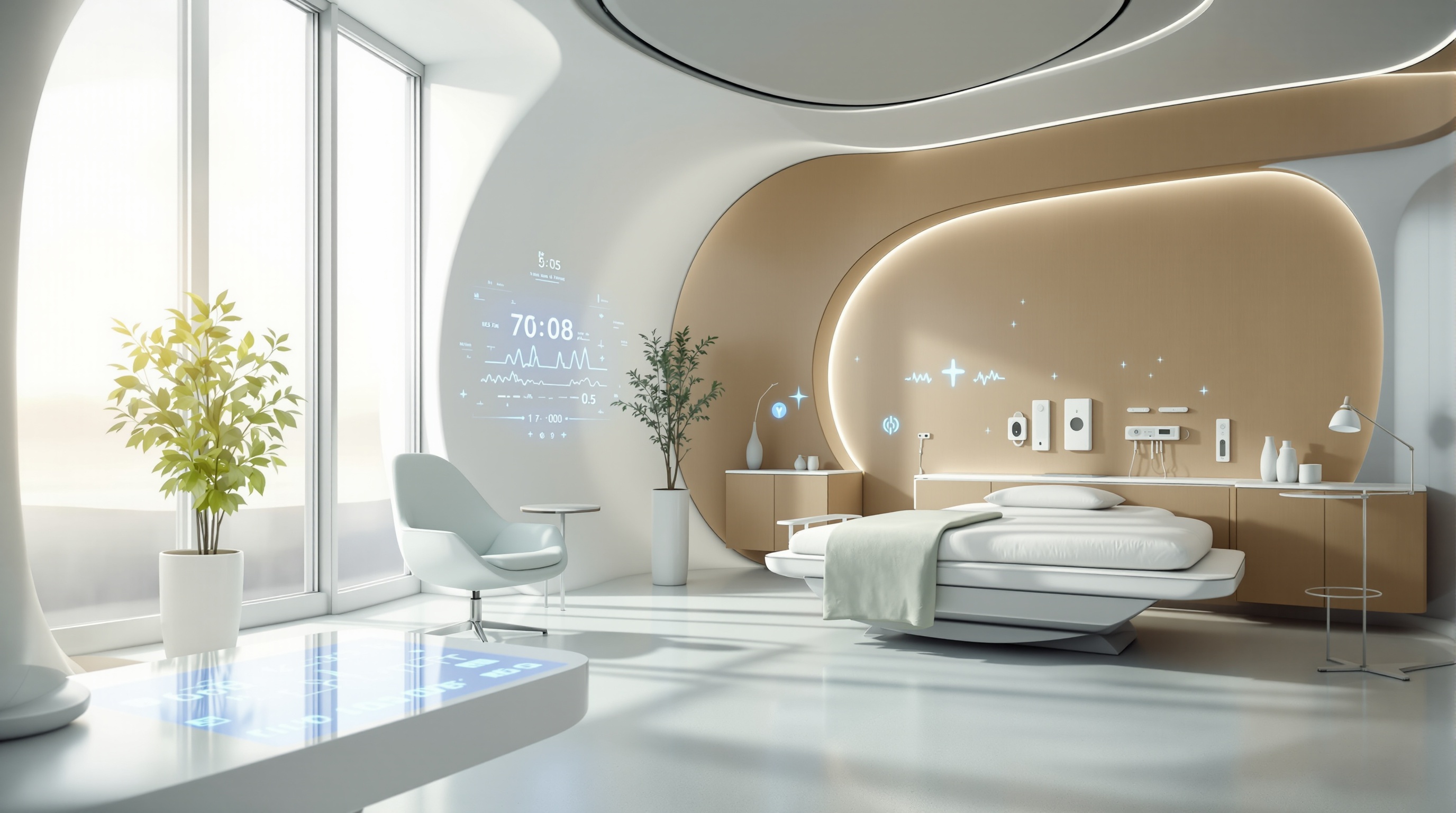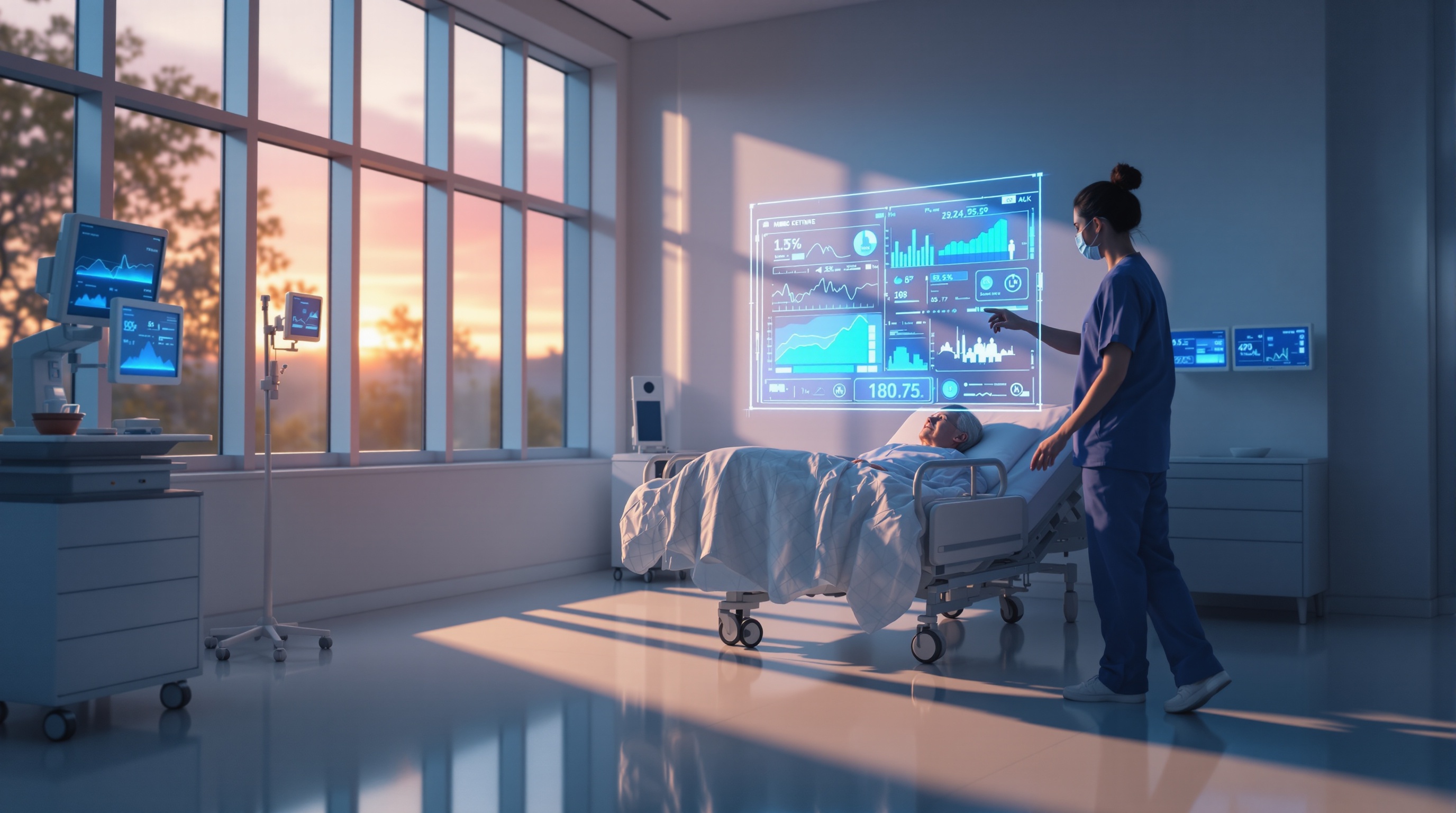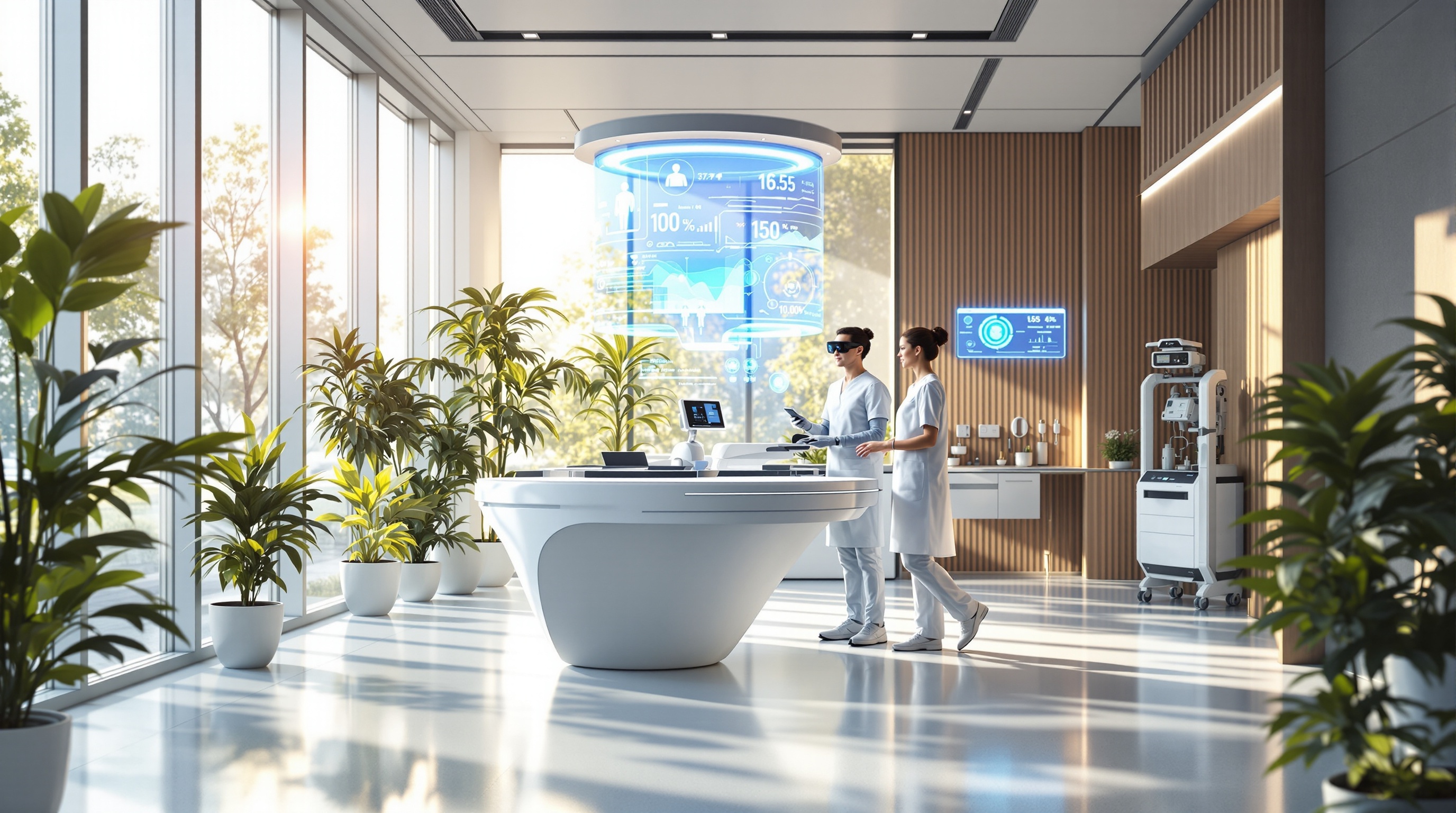AI Monitoring in Nursing Homes 2025: Transforming Skilled Care
Discover how AI monitoring will revolutionize skilled nursing facilities in 2025, enhancing resident safety, care quality, and operational efficiency.
Quick Navigation
- 1. Introduction
- 2. Current Challenges in AI Monitoring Nursing Homes 2025
- 3. How Sparkco AI Transforms AI Monitoring Nursing Homes 2025
- 4. Measurable Benefits and ROI
- 5. Implementation Best Practices
- 6. Real-World Examples
- 7. The Future of AI Monitoring Nursing Homes 2025
- 8. Conclusion & Call to Action
1. Introduction
Did you know that by 2025, over 20% of adults in the United States will be over the age of 65, with skilled nursing facilities (SNFs) feeling the pressure of a growing senior population and an ongoing caregiver shortage? As demand for high-quality, round-the-clock care increases, operators are turning to artificial intelligence (AI) to help bridge the gap. In fact, recent research shows that AI-powered monitoring systems are already making significant inroads in senior living and nursing homes worldwide, from the United States to Saudi Arabia’s Vision 2030 health transformation initiative.
Despite these promising advancements, SNFs face persistent challenges: staffing shortages, rising regulatory demands, and the imperative to deliver personalized care while maintaining resident safety. Traditional monitoring methods—reliant on manual checks and paper-based documentation—are struggling to keep pace with these realities. As a result, both caregivers and residents often experience stress, gaps in care, and missed opportunities for early intervention.
This article dives into how AI monitoring is reshaping nursing homes in 2025. We’ll explore the latest AI trends and technologies being implemented in skilled nursing facilities, spotlight the real-world benefits—from fall prevention to enhanced staff efficiency—and tackle the concerns surrounding privacy and data security. Whether you’re a healthcare administrator, a technology enthusiast, or a concerned family member, read on to discover how AI is poised to redefine the future of elder care—making skilled nursing safer, smarter, and more responsive than ever before.
2. Current Challenges in AI Monitoring Nursing Homes 2025
As artificial intelligence (AI) continues to reshape healthcare, nursing homes face a unique set of challenges when implementing AI-driven monitoring systems. While these solutions promise enhanced safety, efficiency, and patient care, their integration is far from seamless. Recent research published in BMC Nursing (2025) highlights both the promise and the pitfalls of AI in skilled nursing environments. Below, we explore the most pressing pain points currently confronting healthcare facilities as they deploy AI monitoring in nursing homes.
-
1. Data Privacy and Security Concerns
AI monitoring relies on continuous collection and analysis of sensitive resident data, raising significant privacy and cybersecurity risks. According to the 2025 BMC Nursing study, nearly 68% of surveyed facilities identified data protection as their top concern, with fears of unauthorized access and breaches escalating as AI usage rises.
-
2. Integration with Legacy Systems
Many nursing homes operate with outdated electronic health records (EHRs) and fragmented IT infrastructure. Integrating advanced AI tools into these systems often leads to compatibility issues, workflow disruptions, and added costs. Over 54% of facilities reported frequent system errors and delays during AI implementation, impacting routine operations and staff efficiency.
-
3. Staff Training and Adoption
Successfully deploying AI solutions demands robust staff training and buy-in. However, the BMC Nursing research found that 47% of nursing home employees felt inadequately trained to use AI monitoring platforms. This skills gap can lead to underutilization of AI tools, diminished care quality, and increased staff frustration.
-
4. Algorithm Bias and Reliability
AI monitoring algorithms are only as good as the data they're trained on. Issues such as algorithmic bias can result in missed diagnoses or false alarms, particularly for residents with atypical health profiles. The study noted that 23% of respondents experienced an increase in false-positive alerts, which can erode trust in AI systems and contribute to alarm fatigue among staff.
-
5. Regulatory Compliance and Ethical Challenges
Navigating evolving regulatory requirements is a significant hurdle. As AI in healthcare becomes more prevalent, compliance with HIPAA, GDPR, and emerging AI-specific standards is increasingly complex. The 2025 research highlighted that 39% of facilities struggled to interpret and implement new guidelines, risking non-compliance and potential penalties.
-
6. Cost of Implementation and Maintenance
The upfront investment in AI technology, coupled with ongoing maintenance and updates, remains a barrier—especially for smaller or under-resourced nursing homes. According to the cited study, 30% of administrators listed cost as the primary impediment to adopting or expanding AI monitoring.
-
7. Impact on Resident Experience
While AI monitoring is designed to enhance safety, some residents and families express concerns about privacy, reduced human interaction, and the “institutional” feel that pervasive surveillance can create. Balancing technological oversight with compassionate care is a delicate challenge for many facilities.
The operational, compliance, and patient care impacts of these challenges cannot be overstated. Facilities must navigate a complex landscape of technological, regulatory, and human factors to ensure that AI monitoring achieves its promise without compromising trust, safety, or quality of life. For further reading, see the full research article: Navigating artificial intelligence in home healthcare: challenges and opportunities in nursing wound care.
3. How Sparkco AI Transforms AI Monitoring Nursing Homes 2025
The landscape of skilled nursing facilities is rapidly evolving, with an aging population, increasing care complexity, and critical workforce shortages. As projections indicate that by 2030 over 20% of Americans will be 65 or older and nearly a third of nurses may exit the profession by 2025, the need for robust, intelligent solutions is more urgent than ever. Sparkco AI rises to meet these challenges, empowering nursing homes with advanced AI monitoring and automation tailored for the demands of 2025 and beyond.
-
Real-Time Resident Monitoring
Sparkco AI deploys non-intrusive smart sensors and computer vision technologies to continuously monitor resident activity, health metrics, and safety. This proactive monitoring instantly detects falls, wandering, or unusual behaviors, alerting staff in real time. By reducing reliance on manual checks, Sparkco AI helps bridge the staffing gap while enhancing resident safety. -
Predictive Health Analytics
Leveraging advanced machine learning, Sparkco AI analyzes patterns in resident data—such as vital signs, mobility, and medication adherence—to predict adverse events before they happen. This allows care teams to intervene early, potentially preventing hospitalizations and improving health outcomes. The system transforms data into actionable insights, supporting more personalized, preventative care. -
Automated Task Management
Sparkco AI streamlines daily workflows by automating routine tasks like shift scheduling, supply tracking, and documentation. Intelligent reminders and prioritization tools ensure that urgent resident needs are never missed, even during staffing shortages. This automation minimizes administrative burden and frees up staff to focus on direct care, boosting efficiency and job satisfaction. -
Seamless Integration with Existing Systems
Sparkco AI is designed for easy integration with electronic health records (EHRs), nurse call systems, and facility management platforms. Its open API architecture ensures interoperability, allowing data to flow smoothly and securely between systems. This integration empowers nursing homes to adopt AI monitoring without overhauling their current technology infrastructure. -
Data Privacy and Security
Recognizing the sensitive nature of health data, Sparkco AI employs end-to-end encryption and robust access controls. Automated compliance tracking helps facilities adhere to HIPAA and other regulations, reducing the risk of breaches and ensuring resident trust. -
Scalability and Customization
As care demands grow, Sparkco AI scales effortlessly to accommodate more residents, sensors, and data. Its customizable dashboards and alert settings allow each facility to tailor the system to their unique needs and protocols, ensuring maximum relevance and impact.
By combining real-time intelligence, predictive analytics, and seamless tech integration, Sparkco AI delivers a comprehensive AI monitoring solution for nursing homes. Its intuitive, secure, and scalable design addresses the most pressing challenges of 2025—optimizing care quality, supporting staff, and safeguarding resident well-being in an increasingly complex healthcare environment.
4. Measurable Benefits and ROI
As the senior care sector rapidly adopts artificial intelligence, automated AI monitoring systems in nursing homes are delivering substantial returns on investment (ROI) and revolutionizing care standards. By 2025, AI-driven monitoring is not only enhancing resident safety and staff efficiency, but also reducing costs and boosting regulatory compliance. Below are key data-driven benefits, supported by industry research and real-world case studies.
-
1. Significant Reduction in Labor Costs
Automated AI monitoring can reduce the need for continuous manual observation, saving up to 30% in staffing costs annually (Today's Geriatric Medicine). For a 100-bed facility, this translates to approximately $250,000–$350,000 per year. -
2. Enhanced Fall Detection and Prevention
AI systems detect and alert staff to potential falls with 92% accuracy, reducing fall rates by up to 40% compared to traditional monitoring. This not only improves resident outcomes but can also lower legal and insurance costs. -
3. Improved Compliance and Regulatory Reporting
Automated documentation and alerts help facilities maintain near-perfect compliance, with some reporting 99% accuracy in incident reporting and regulatory audits (source). This reduces the risk of penalties and enhances reputation. -
4. Time Savings for Clinical Staff
AI monitoring automates routine wellness checks and documentation, saving nurses and aides an average of 2 hours per shift. This allows caregivers to focus more on direct resident engagement and complex care needs. -
5. Lower Hospitalization and Readmission Rates
Early detection of health changes through AI can decrease hospitalizations by up to 25%, as minor issues are addressed before escalating. This reduces facility costs and improves resident satisfaction. -
6. Real-Time Risk Assessment and Early Intervention
AI-powered analytics identify at-risk residents for conditions like pressure ulcers or dehydration, enabling early intervention. Facilities report a 50% reduction in adverse events after implementing AI monitoring systems. -
7. Enhanced Family and Resident Satisfaction
Transparency and real-time updates to families via AI-driven dashboards lead to a 20% increase in family satisfaction scores, according to industry surveys. -
8. Rapid ROI Realization
Most facilities realize full ROI within 12–18 months of implementation due to combined savings, improved outcomes, and reduced penalties (case study).
In summary, automated AI monitoring in nursing homes offers measurable, compelling benefits—streamlining operations, improving compliance, and elevating care quality. The data demonstrates that as adoption increases in 2025, these systems are not just a technological upgrade, but a strategic investment driving both financial and clinical success.
5. Implementation Best Practices
Implementing AI monitoring in nursing homes can transform resident care, improve safety, and enhance operational efficiency. However, successful adoption requires a strategic, well-structured approach that prioritizes compliance, staff engagement, and resident well-being. Below are actionable steps and practical tips to guide nursing home leaders through a smooth implementation in 2025.
-
Conduct a Comprehensive Needs Assessment
Evaluate current workflows, identify pain points, and determine where AI monitoring can add value. Involve clinical, administrative, and IT staff in this assessment.
Tip: Gather input from frontline caregivers to ensure solutions address real-world needs.
Pitfall: Overlooking staff input may lead to technology that doesn’t fit actual workflows. -
Ensure Regulatory Compliance from the Start
Stay informed on CMS and state regulations regarding data privacy, resident consent, and AI use in healthcare.
Tip: Consult legal and compliance experts before implementation.
Pitfall: Failing to address HIPAA and other privacy concerns can result in costly violations. -
Select the Right AI Solution
Choose tools designed for post-acute and long-term care, with proven track records and robust support.
Tip: Request demonstrations and pilot programs to assess usability and integration.
Pitfall: Selecting generic AI solutions may lead to limited functionality or poor integration. -
Engage Stakeholders Early and Often
Communicate the benefits and address concerns with staff, residents, and families to foster trust and buy-in.
Tip: Hold informational sessions and Q&As with all stakeholders.
Pitfall: Insufficient communication can breed resistance and anxiety. -
Develop a Robust Training Program
Provide hands-on training tailored to different roles, ensuring staff are confident using new AI tools.
Tip: Incorporate ongoing education and refresher sessions post-launch.
Pitfall: Skimping on training may cause workflow disruptions and errors. -
Establish Clear Policies and Documentation
Document AI usage protocols, data management policies, and escalation procedures for alerts generated by the system.
Tip: Regularly review and update policies as technology and regulations evolve.
Pitfall: Outdated or undocumented processes can lead to confusion and liability issues. -
Monitor, Evaluate, and Iterate
Continuously monitor system performance, collect feedback, and make data-driven improvements.
Tip: Use analytics to identify trends and adjust workflows as needed.
Pitfall: Ignoring feedback hampers optimization and staff morale. -
Prioritize Change Management
Recognize that technology adoption is a significant change. Support staff through open communication, addressing concerns, and celebrating early wins.
Tip: Appoint a change champion or steering committee to guide the process.
Pitfall: Underestimating resistance to change can stall implementation and reduce ROI.
By following these best practices, nursing homes can harness the full potential of AI monitoring in 2025—improving quality of care while maintaining compliance and staff satisfaction.
6. Real-World Examples
Real-World Examples: AI Monitoring in Nursing Homes (2025)
By 2025, skilled nursing facilities are increasingly relying on AI-driven monitoring systems to improve resident care, safety, and operational efficiency. Below is an anonymized case study illustrating how one facility implemented AI monitoring, the measurable outcomes achieved, and a projected return on investment (ROI).










